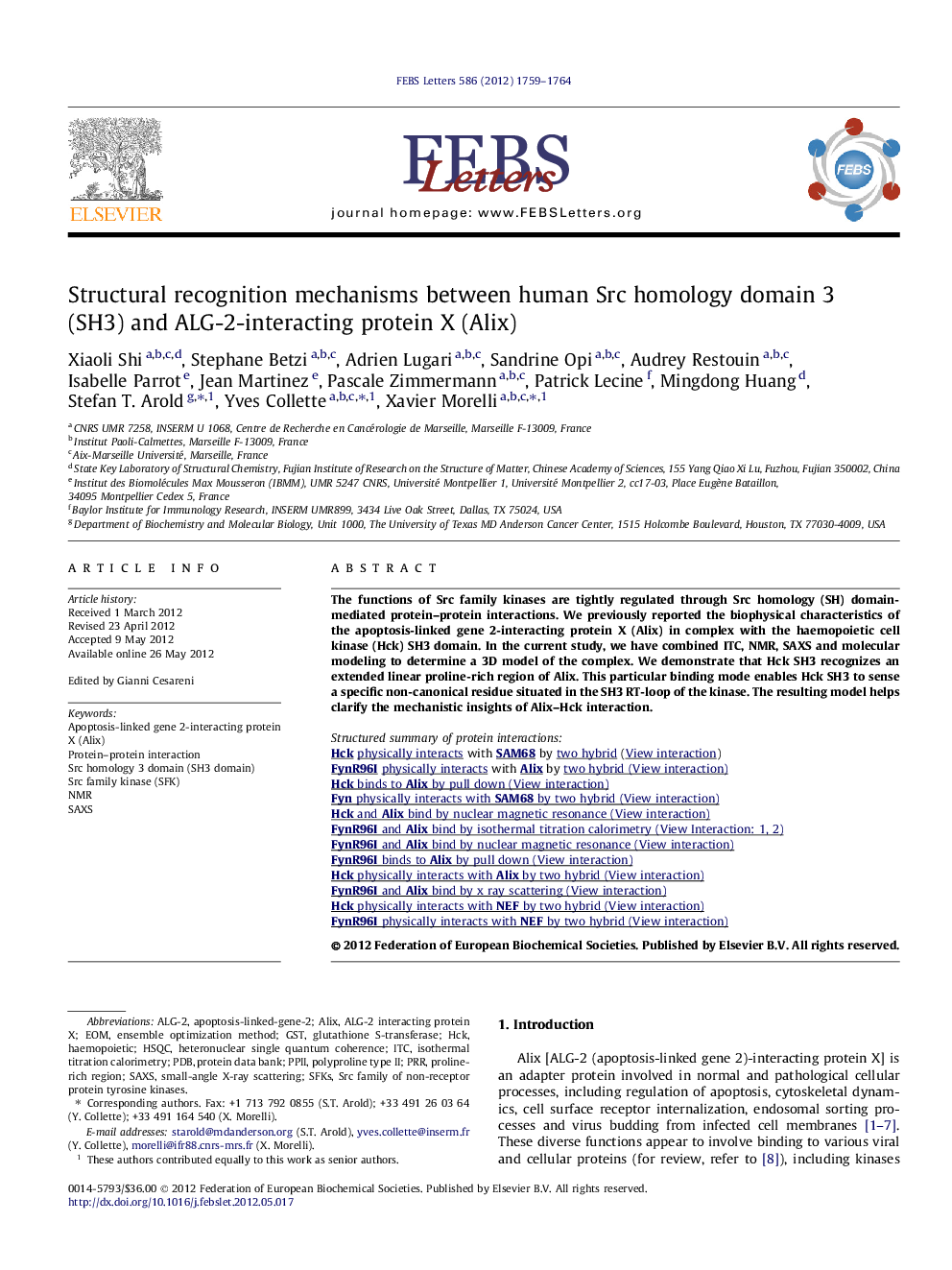| Article ID | Journal | Published Year | Pages | File Type |
|---|---|---|---|---|
| 2048221 | FEBS Letters | 2012 | 6 Pages |
The functions of Src family kinases are tightly regulated through Src homology (SH) domain-mediated protein–protein interactions. We previously reported the biophysical characteristics of the apoptosis-linked gene 2-interacting protein X (Alix) in complex with the haemopoietic cell kinase (Hck) SH3 domain. In the current study, we have combined ITC, NMR, SAXS and molecular modeling to determine a 3D model of the complex. We demonstrate that Hck SH3 recognizes an extended linear proline-rich region of Alix. This particular binding mode enables Hck SH3 to sense a specific non-canonical residue situated in the SH3 RT-loop of the kinase. The resulting model helps clarify the mechanistic insights of Alix–Hck interaction.Structured summary of protein interactionsHckphysically interacts with SAM68 by two hybrid (View interaction)FynR96Iphysically interacts with Alix by two hybrid (View interaction)Hckbinds to Alix by pull down (View interaction)Fynphysically interacts with SAM68 by two hybrid (View interaction)Hck and Alixbind by nuclear magnetic resonance (View interaction)FynR96I and Alixbind by isothermal titration calorimetry (View Interaction: 1, 2)FynR96I and Alixbind by nuclear magnetic resonance (View interaction)FynR96Ibinds to Alix by pull down (View interaction)Hckphysically interacts with Alix by two hybrid (View interaction)FynR96I and Alixbind by x ray scattering (View interaction)Hckphysically interacts with NEF by two hybrid (View interaction)FynR96Iphysically interacts with NEF by two hybrid (View interaction)
► Alix achieves a specific SH3 domains RT-loop selection. ► This selection is made through an extended linear ‘peptide-like’ binding mode. ► The proline rich region does not join the V domain to form a tertiary binding site.
